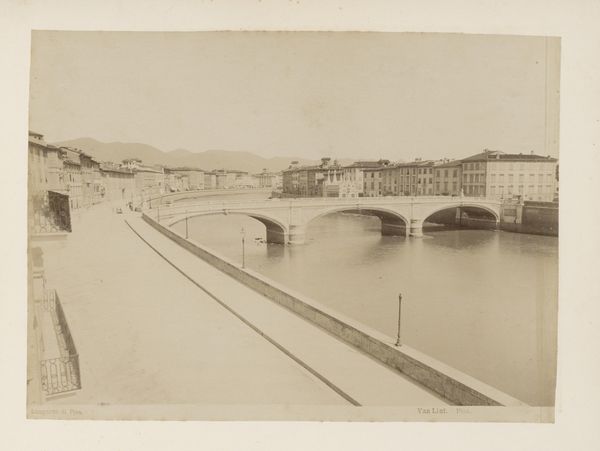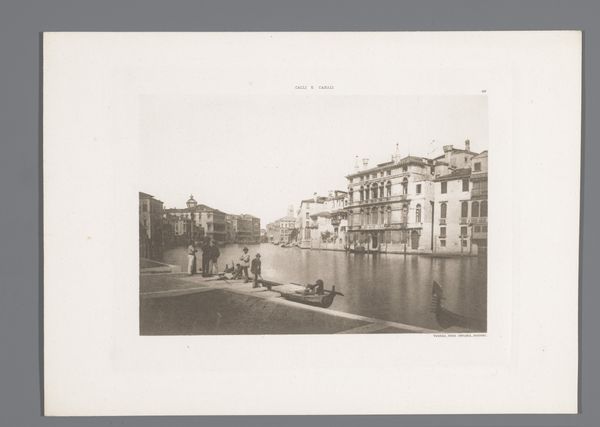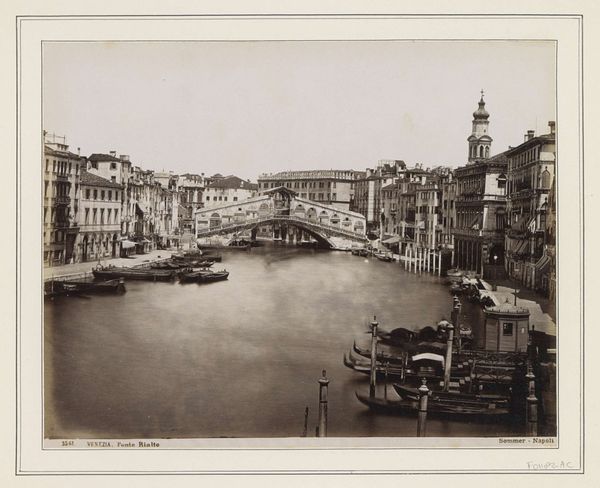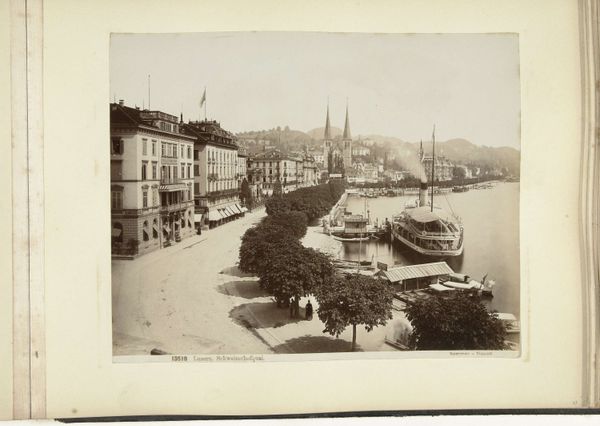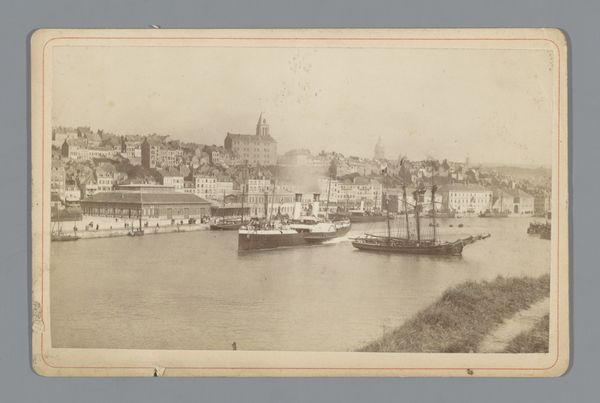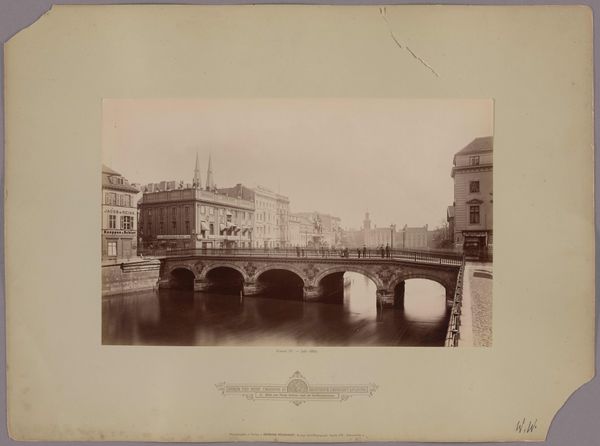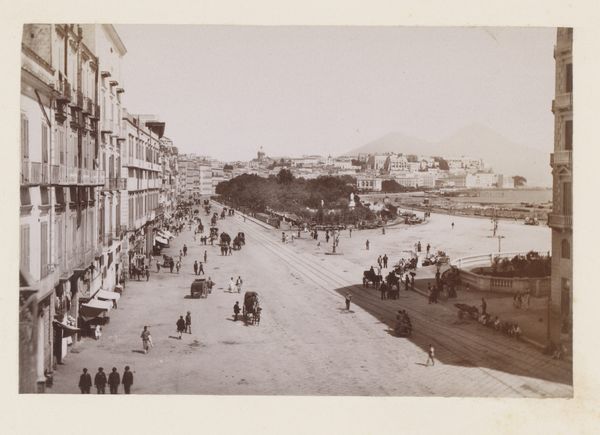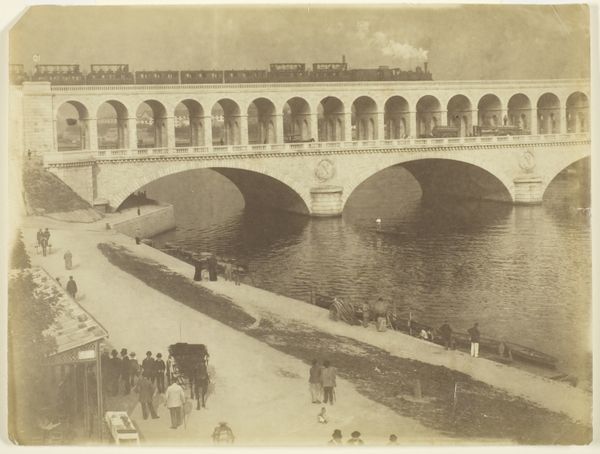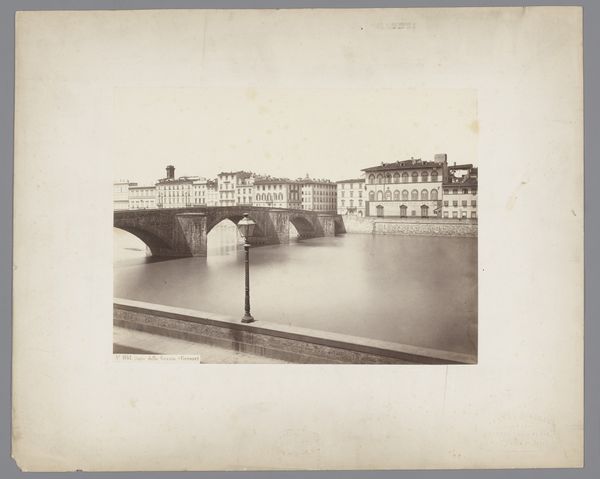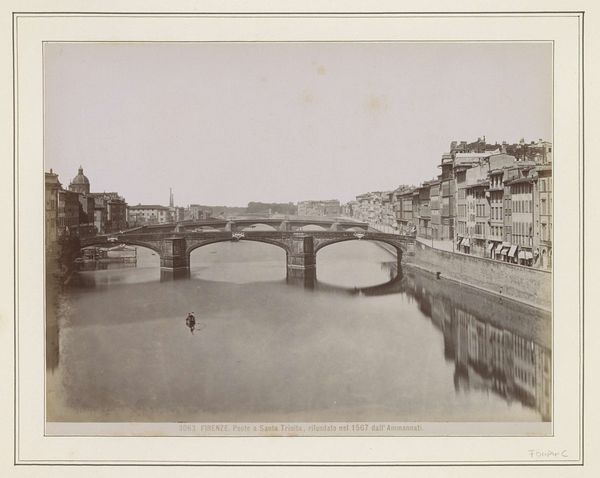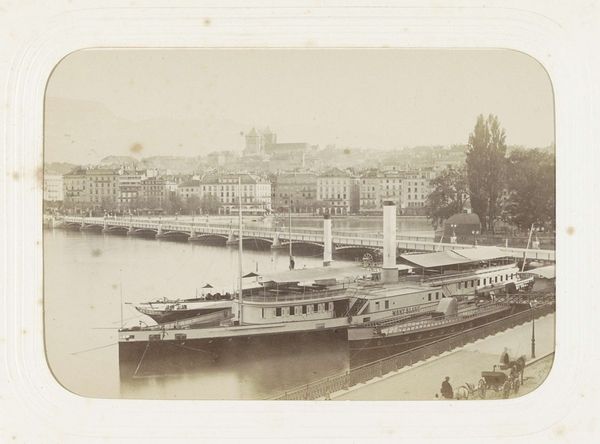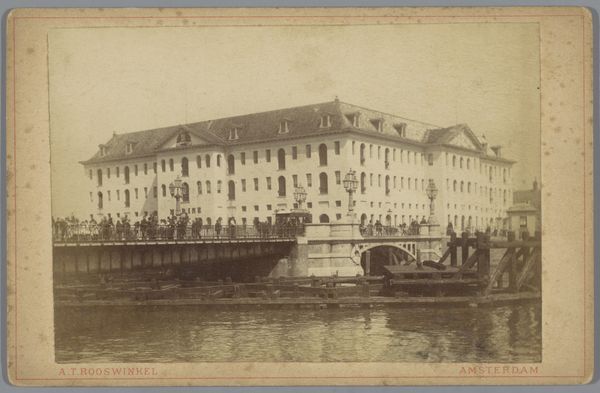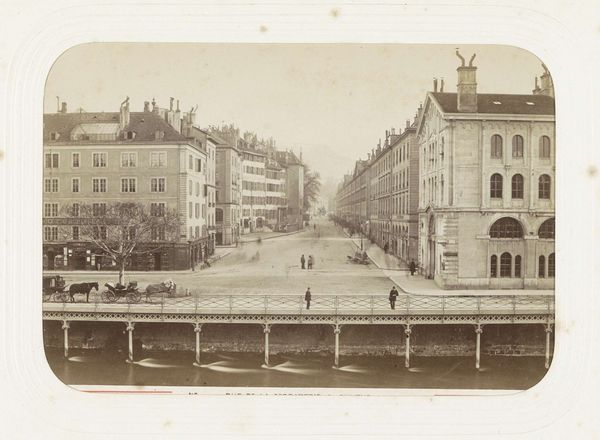
Dimensions: height 193 mm, width 247 mm
Copyright: Rijks Museum: Open Domain
Curator: Looking at this image, I feel an overwhelming sense of quiet observation. Like stepping back in time, or watching a scene unfold from behind a veil. Editor: Precisely! What we're viewing is an albumen print dating from around 1865 to 1890. It's entitled “View of a street along the banks of the Arno in Florence” and it’s attributed to Edizione Brogi. You know, these prints were immensely popular. Curator: Ah, Florence! It certainly captures a lost elegance, a slower rhythm. It feels cinematic almost, like the opening shot of an Italian melodrama. Editor: Yes, exactly. The albumen process renders a softness, and the photographer frames the scene to accentuate the depth, inviting the viewer into the street. But this type of image also speaks volumes about the emerging tourist industry and the construction of "ideal" views that catered to visitor expectations. It became about selling an idealized Florence, frozen in time. Curator: It does have that carefully posed quality. Still, it makes you wonder about those tiny figures walking along the Arno. What were they thinking? Where were they going? Were they in love, perhaps, or deeply worried? I see those shadows lengthen, and a whole unspoken drama starts unfolding in my head. Editor: Right. Think about who would have consumed this image. Primarily middle-class tourists wanting to document and remember their Grand Tour. Brogi and other firms produced these kinds of prints at scale and often presented them in albums – visual souvenirs ready for the parlor back home. They solidify certain romantic visions, they shape cultural memory and experience. Curator: Shaping visions… it’s powerful. It does raise a question – how much of what we consider "historical truth" is just carefully curated imagery? I look at this beautiful Florentine street, and wonder about the messier realities hidden just beyond the frame. Editor: Indeed, this seemingly benign cityscape reveals a carefully managed intersection of commerce, culture, and power. It is a picturesque fragment of a much more complex past. Curator: Thanks, it really invites us to not only gaze but also to question and consider. Editor: A pleasure. Let’s move on, shall we? There’s much more to see, and question.
Comments
No comments
Be the first to comment and join the conversation on the ultimate creative platform.
